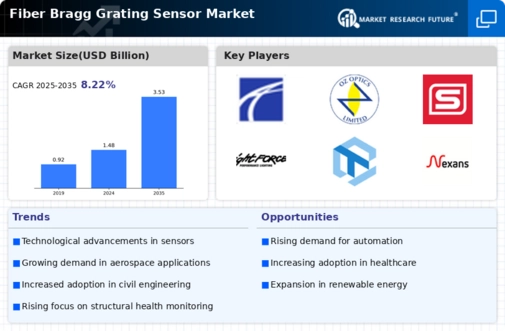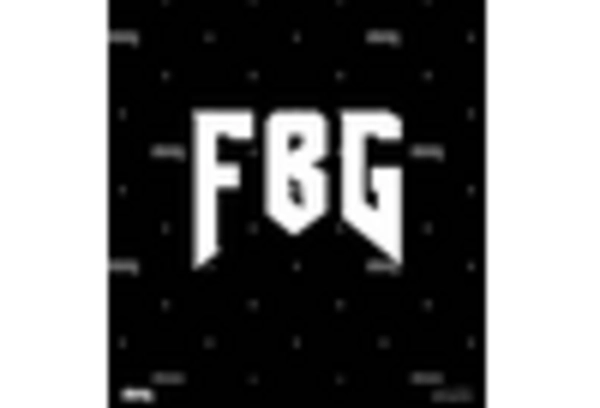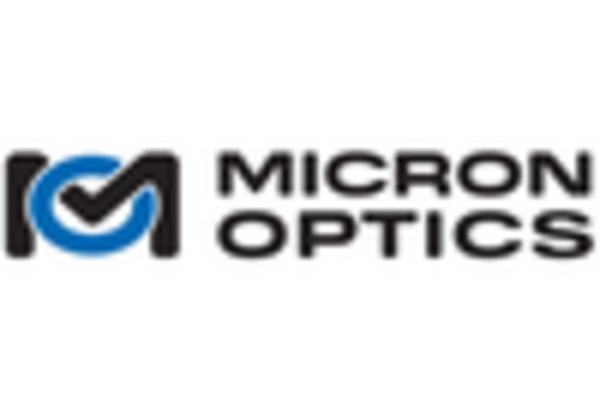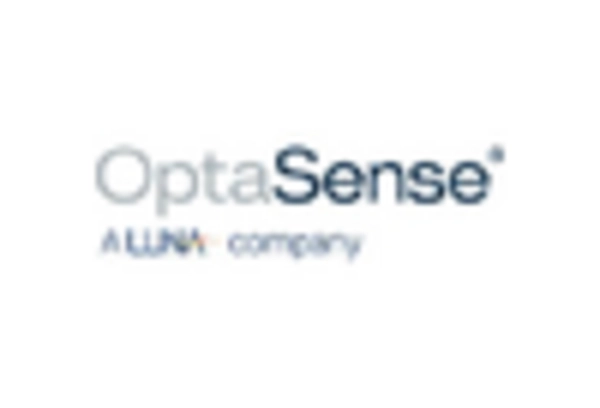Advancements in Telecommunications
The Fiber Bragg Grating Sensor Market is poised for growth due to advancements in telecommunications. As the demand for high-speed internet and data transmission increases, Fiber Bragg Grating sensors are being utilized for monitoring and managing optical networks. These sensors provide critical feedback on temperature and strain, which can affect network performance. The telecommunications sector is expected to invest heavily in upgrading infrastructure, with Fiber Bragg Grating sensors playing a pivotal role in ensuring optimal network functionality. Market data suggests that the telecommunications industry is one of the largest consumers of Fiber Bragg Grating technology, indicating a robust future for the Fiber Bragg Grating Sensor Market as connectivity demands escalate.
Emerging Applications in Aerospace
The Fiber Bragg Grating Sensor Market is witnessing a surge in applications within the aerospace sector. The lightweight and high-performance characteristics of Fiber Bragg Grating sensors make them ideal for monitoring critical parameters in aircraft and spacecraft. These sensors can measure strain, temperature, and pressure, contributing to enhanced safety and performance. As the aerospace industry continues to innovate and develop advanced materials, the demand for Fiber Bragg Grating technology is likely to increase. Market analysis indicates that the aerospace sector is becoming a key driver for the Fiber Bragg Grating Sensor Market, as manufacturers seek to implement cutting-edge monitoring solutions.
Increased Focus on Renewable Energy
The Fiber Bragg Grating Sensor Market benefits from the growing emphasis on renewable energy sources. As countries strive to meet sustainability goals, the integration of Fiber Bragg Grating sensors in wind turbines and solar panels becomes increasingly prevalent. These sensors facilitate the monitoring of structural integrity and performance, ensuring that renewable energy systems operate efficiently. The renewable energy sector is projected to expand significantly, with investments in technology and infrastructure. This trend suggests a promising outlook for the Fiber Bragg Grating Sensor Market, as the need for reliable monitoring solutions in renewable energy applications continues to rise.
Growing Interest in Smart Manufacturing
The Fiber Bragg Grating Sensor Market is significantly influenced by the rise of smart manufacturing practices. As industries adopt automation and IoT technologies, the need for precise monitoring of machinery and processes becomes paramount. Fiber Bragg Grating sensors offer real-time data on temperature and strain, enabling manufacturers to optimize operations and reduce downtime. The smart manufacturing sector is expected to grow rapidly, with investments in technology and infrastructure. This trend indicates a favorable environment for the Fiber Bragg Grating Sensor Market, as companies seek innovative solutions to enhance productivity and efficiency in their operations.
Rising Demand for Structural Health Monitoring
The Fiber Bragg Grating Sensor Market experiences a notable increase in demand for structural health monitoring solutions. This trend is driven by the need for real-time monitoring of infrastructure, such as bridges, dams, and buildings, to ensure safety and longevity. The integration of Fiber Bragg Grating sensors allows for precise strain and temperature measurements, which are critical in assessing the integrity of structures. According to recent data, the market for structural health monitoring is projected to grow significantly, with investments in infrastructure maintenance and safety becoming a priority for governments and private sectors alike. This heightened focus on infrastructure resilience is likely to propel the Fiber Bragg Grating Sensor Market forward, as stakeholders seek reliable and efficient monitoring solutions.

















Leave a Comment